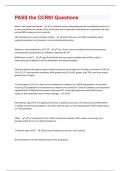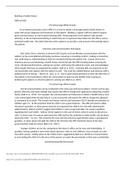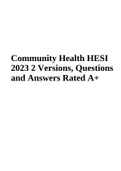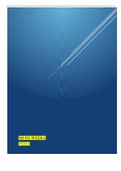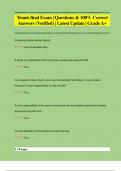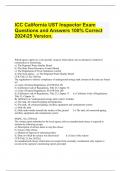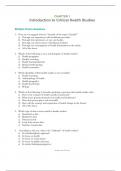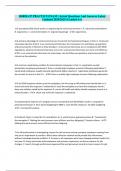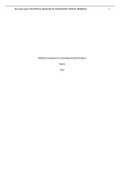Exam (elaborations)
PASS the CCRN! Latest 2024/2025 Updated Questions and Answers Guaranteed 100% Success.
- Course
- Institution
What is the Z point technique? - is a method used to estimate ventricular end diastolic pressure. It is taken just before the closure of the mitral valve and is especially useful when an A wave does not exist on the PAOP tracing such as in atrial fib. CDC indications for urinary catheter include...
[Show more]
